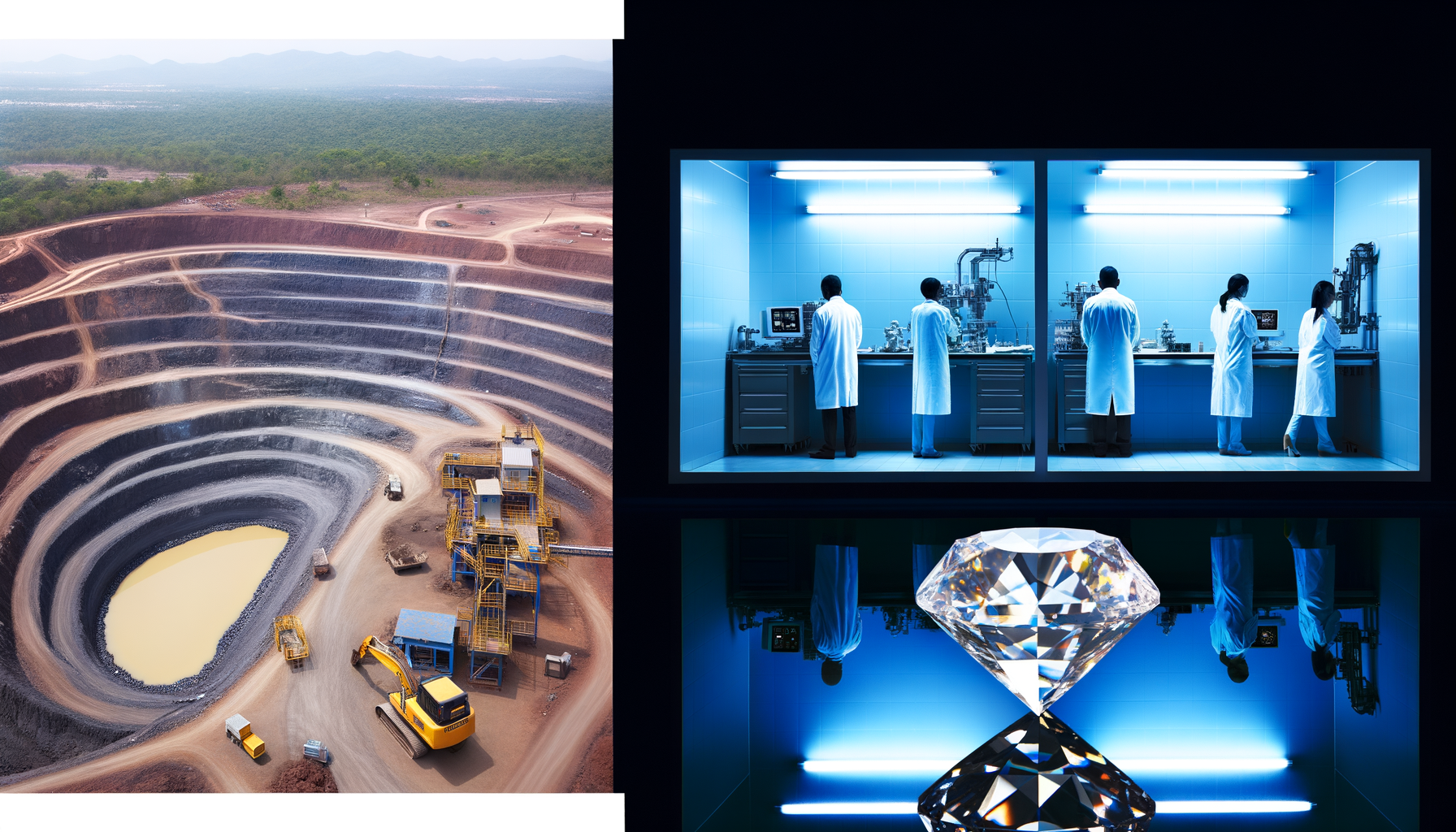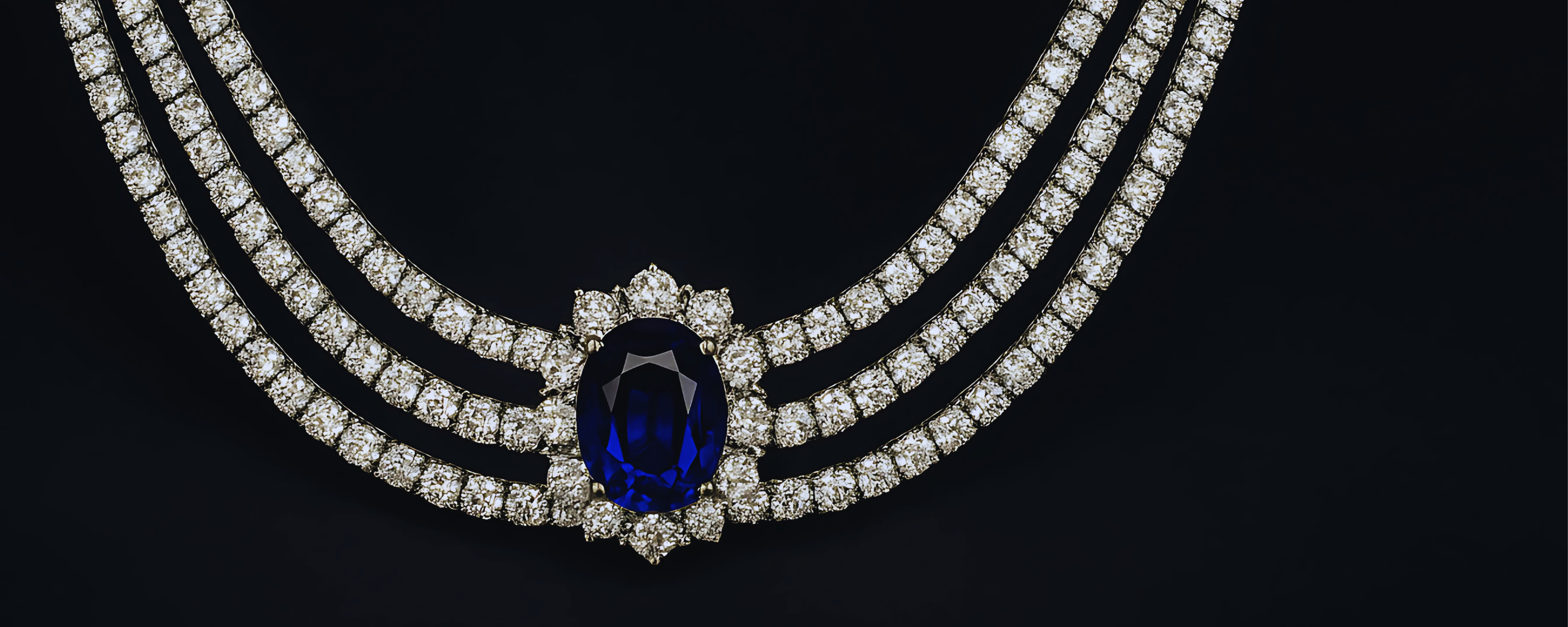Beyond 'Conflict-Free': Why the Diamond Industry's Ethical Claims Fall Short

While many diamond retailers claim to sell 'conflict-free' diamonds, this article investigates why these claims often fall short of true ethical standards. We explore the limitations of the Kimberley Process, ongoing human rights concerns in diamond mining, and why lab-grown diamonds offer a genuinely ethical alternative with complete supply chain transparency. Discover how Lark & Berry's cultured diamonds provide peace of mind that goes beyond inadequate 'conflict-free' certifications.
In the glittering world of fine jewellery, few phrases are more misunderstood than 'conflict-free diamonds'. This seemingly reassuring label has become the industry's standard response to ethical concerns, but beneath its polished surface lies a complex reality that consumers deserve to understand.
At Lark & Berry, we believe in complete transparency. As pioneers in exclusively using cultured diamonds since our founding in 2018, we're pulling back the curtain on what 'conflict-free' really means—and why it often falls dramatically short of the ethical standards consumers believe they're supporting.
The 'Conflict-Free' Diamond Myth: What You're Not Being Told
When you purchase a diamond marketed as 'conflict-free', you might reasonably assume it was sourced without contributing to violence, human rights abuses, or environmental devastation. Unfortunately, this assumption often proves incorrect.
Expert Insight:
"The 'conflict-free' certification primarily focuses on preventing diamonds from funding rebel movements against legitimate governments. It was never designed to address broader ethical concerns like child labour, worker exploitation, or environmental damage."
Let's examine five crucial facts about 'conflict-free' diamonds that reveal why this designation offers inadequate ethical assurance:
1. The Kimberley Process: A Limited Definition of 'Conflict'
The Kimberley Process Certification Scheme (KPCS), established in 2003, forms the backbone of 'conflict-free' claims. However, its definition of 'conflict diamonds' is remarkably narrow:
"Rough diamonds used by rebel movements or their allies to finance conflict aimed at undermining legitimate governments."
This definition deliberately excludes diamonds associated with:
- Human rights abuses by legitimate governments
- Child labour and worker exploitation
- Environmental destruction
- Corruption and money laundering
When a diamond is labelled 'conflict-free', it simply means it hasn't funded rebel movements—not that it was sourced ethically across all dimensions.
2. Traceability Limitations: The Chain of Uncertainty
Once diamonds enter the global supply chain, maintaining true traceability becomes virtually impossible. Rough diamonds from various sources are typically mixed during sorting and cutting, creating opportunity for exploitation:
- Only 20% of diamonds can be tracked to their specific mine of origin
- Diamond parcels can be contaminated with unethical stones during trading
- Documentation can be falsified or manipulated across multiple countries
This lack of true traceability creates a system where ethically-problematic diamonds can easily enter the 'conflict-free' supply chain, particularly as diamonds change hands between miners, traders, cutters, and retailers.
3. Ongoing Human Rights Concerns in 'Compliant' Countries
Even diamonds from Kimberley Process-compliant countries frequently come with serious ethical concerns:
- Zimbabwe: Despite KPCS compliance, the country's Marange diamond fields have been linked to government-sanctioned violence against civilians and severe human rights abuses
- Angola: Reports document forced relocations of communities and violent security practices at diamond mines
- Democratic Republic of Congo: Child labour remains prevalent in diamond mining regions
Because these issues don't involve rebel movements, diamonds from these regions can still be certified as 'conflict-free' despite their problematic origins.
4. Environmental Devastation: The Unseen Impact
Diamond mining causes severe environmental damage that the 'conflict-free' designation completely ignores:
- A single carat of mined diamond requires moving approximately 250 tonnes of earth
- Diamond mining causes deforestation, soil erosion, and ecosystem destruction
- Mining operations contaminate water sources with chemicals and sediment
- Many diamond mines leave permanent ecological scars that cannot be remediated
5. Artisanal Mining: Overlooked Exploitation
Approximately 15-20% of the world's diamonds come from artisanal and small-scale mining operations where:
- Miners often earn less than $2 per day in dangerous conditions
- Child labour remains common and largely undocumented
- Workers lack basic safety equipment or healthcare
- Informal operations fall outside meaningful regulatory oversight
The Kimberley Process has proven largely ineffective at addressing these issues, allowing diamonds from exploitative artisanal sources to enter the 'conflict-free' supply chain.
Lab-Grown Diamonds: The Truly Ethical Alternative
In contrast to the problematic 'conflict-free' designation, lab-grown (cultured) diamonds offer a genuinely ethical choice with complete supply chain transparency.
Expert Insight:
"Lab-grown diamonds are chemically, physically, and optically identical to mined diamonds. The only difference is their origin—they're created in controlled laboratory environments rather than extracted from the earth."
Here's why cultured diamonds represent the ethical future of fine jewellery:
1. True Supply Chain Transparency
Unlike mined diamonds, cultured diamonds offer complete traceability:
- Every diamond can be traced to its specific laboratory of origin
- No possibility of contamination with unethical stones
- Clear documentation throughout the supply chain
This transparency ensures that when you purchase a cultured diamond from Lark & Berry you know exactly where it came from and under what conditions it was created.
2. Guaranteed Human Rights Compliance
Lab-grown diamonds eliminate the human rights concerns associated with diamond mining:
- No forced labour or community displacement
- No child labour or exploitative working conditions
- Fair wages and safe working environments
When you choose cultured diamonds, you're supporting ethical labour practices without compromise.
3. Minimal Environmental Impact
The environmental benefits of lab-grown diamonds are substantial:
- No land disruption, deforestation, or ecosystem damage
- Significantly lower carbon footprint than mined diamonds
- No water pollution or chemical contamination of natural habitats
- Many labs use renewable energy sources to further reduce environmental impact
4. Quality and Value Without Compromise
Choosing ethical diamonds doesn't mean compromising on quality:
- Lab-grown diamonds are certified by the same authorities (GIA, IGI) using the same 4Cs criteria
- They offer identical beauty and durability to mined diamonds
- They typically cost 20-40% less than mined diamonds of equivalent quality
This means you can choose stunning pieces with complete confidence in both their ethics and quality.
How Lark & Berry Goes Beyond 'Conflict-Free'
At Lark & Berry, we've pioneered a truly ethical approach to fine jewellery that transcends the limitations of 'conflict-free' claims:
- Exclusive Use of Lab-Grown Stones: We've worked exclusively with cultured diamonds since our founding in 2018
- Complete Supply Chain Transparency: We maintain relationships with our diamond growers and can trace every stone to its origin
- Comprehensive Ethical Standards: Our commitment extends beyond diamond sourcing to all aspects of our business
- True Sustainability: We design for longevity and use recycled precious metals wherever possible
FAQs: Diamond Ethics and Lab-Grown Alternatives
Are 'conflict-free' diamonds actually ethical?
'Conflict-free' only means the diamonds didn't fund rebel movements against legitimate governments. This certification doesn't address human rights abuses by governments, child labour, worker exploitation, or environmental damage. For truly ethical diamonds, lab-grown stones offer complete transparency and ethical assurance.
How can I verify if a diamond is truly ethically sourced?
For mined diamonds, true verification is nearly impossible due to supply chain opacity and mixing of stones. Lab-grown diamonds, however, offer complete traceability to their origin laboratory, making them the only diamonds with verifiable ethical sourcing.
Do lab-grown diamonds look the same as mined diamonds?
Yes, lab-grown diamonds are chemically, physically, and optically identical to mined diamonds. Even professional gemologists cannot distinguish between them without specialised equipment. They're graded using the same 4Cs criteria (cut, clarity, colour, carat) by the same certification authorities.
Are lab-grown diamonds real diamonds?
Absolutely. Lab-grown diamonds are 100% real diamonds with identical chemical composition (pure carbon in a crystalline structure) to mined diamonds. The only difference is their origin—they're created in controlled laboratory environments rather than extracted from the earth.
Why do lab-grown diamonds cost less than mined diamonds?
Lab-grown diamonds typically cost 20-40% less than mined diamonds of equivalent quality because they don't involve the extensive costs of mining operations, middle-men, or artificial supply constraints. This price difference represents better value, not lower quality.
Conclusion: Making a Truly Ethical Choice
The 'conflict-free' label, while well-intentioned, falls dramatically short of ensuring truly ethical diamond sourcing. By understanding the limitations of this designation, consumers can make more informed choices that align with their values.
Lab-grown diamonds offer the only genuinely ethical alternative with complete transparency, guaranteed human rights compliance, and minimal environmental impact. At Lark & Berry, we're proud to lead this ethical revolution in fine jewellery.
When you choose Lark & Berry, you're not just selecting exceptional fine jewellery—you're supporting a new standard of ethics that goes far beyond inadequate 'conflict-free' claims. You're choosing peace of mind that comes from complete transparency and genuine commitment to ethical practices.
Experience True Ethical Luxury
Discover our collection of fine jewellery featuring cultured diamonds and gemstones that are as beautiful as they are ethical. Explore the Lark & Berry difference and find pieces that reflect your values without compromising on quality or style.



